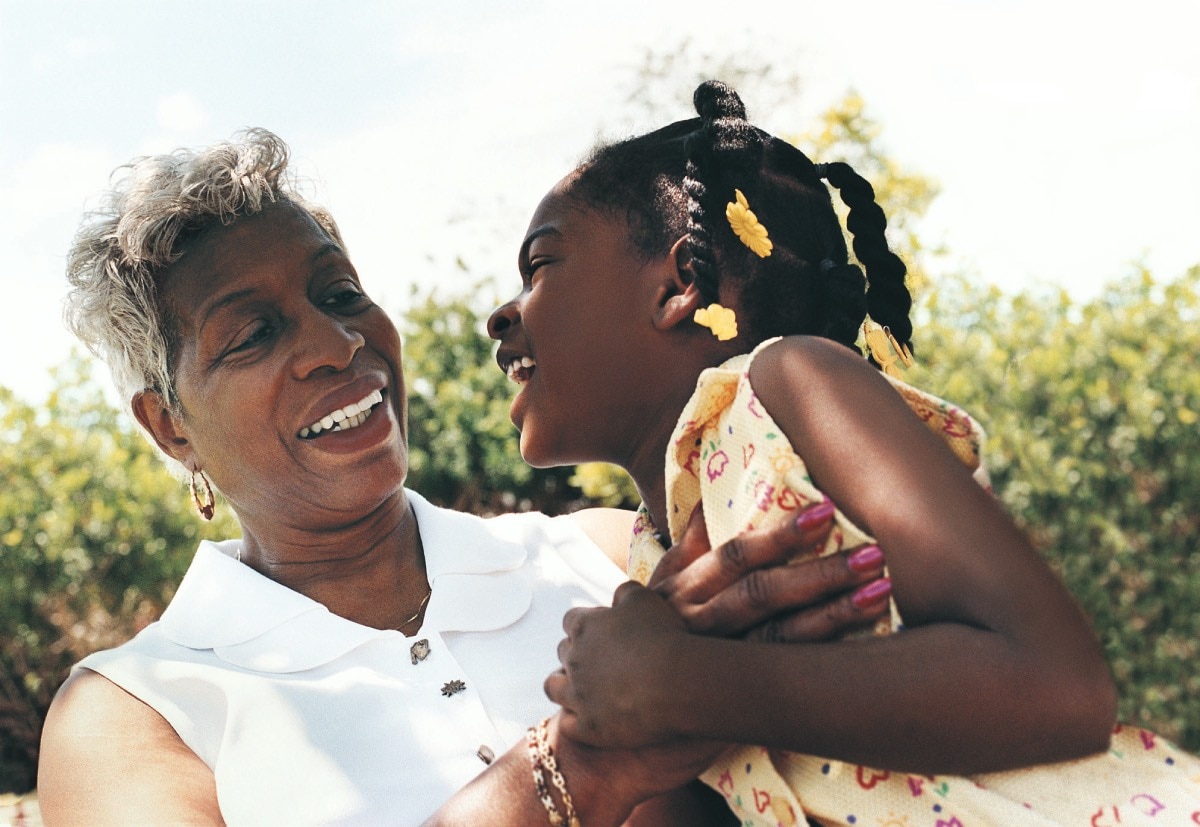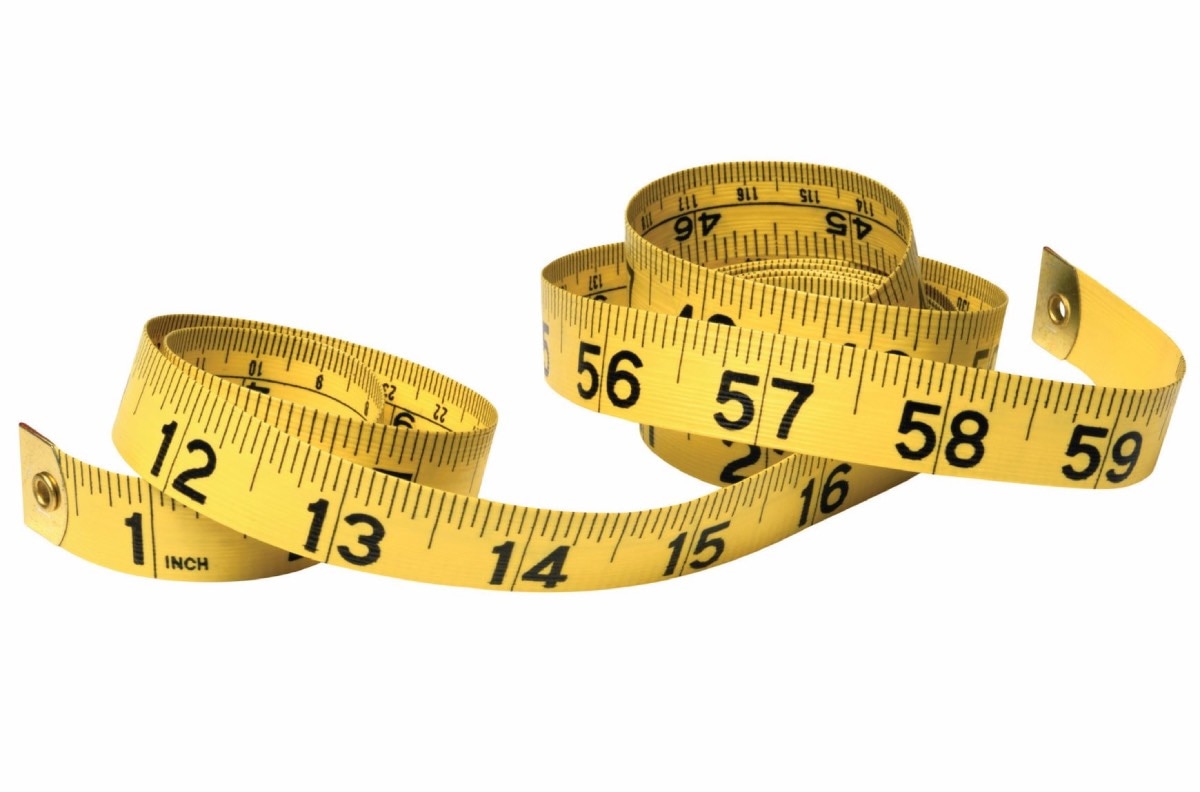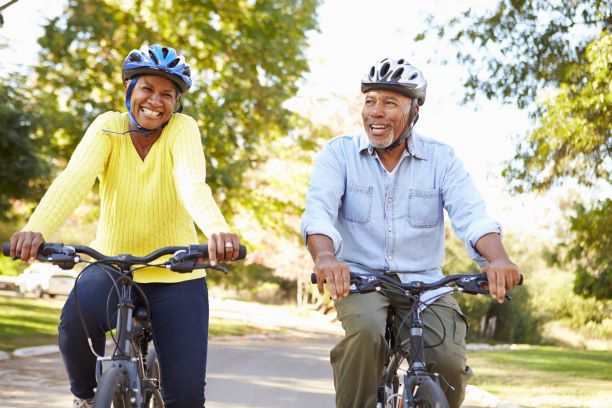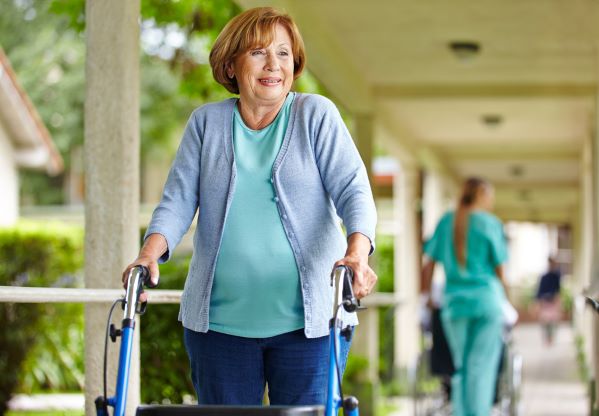Health Tips for Older Adults
In this section:
As you grow older, you go through many changes, and you may need to adjust your lifestyle for healthy aging. Healthy eating and regular physical activity can be keys to good health at any age. Making suitable lifestyle choices may also prevent some health problems, such as diabetes, heart disease, and some cancers. Health tips include
- Select high-fiber foods like whole-grain breads and cereals, beans, unsalted nuts and seeds, deeply colored vegetables (like green beans), and fruits.
- Avoid fried foods. Choose broiled, grilled, or boiled options instead.
- Drink vitamin D-fortified low-fat or fat-free milk; milk products; or nondairy soy, almond, rice, or other drinks with added vitamin D and calcium to help keep your bones strong as you age.
- Drink fluids throughout the day. You may feel less thirsty as you get older, but your body needs fluids to stay healthy and keep you regular. If you have a bladder control problem, check with your doctor about what, how much, and when to drink liquids.
- Ask your health care professional about whether or how you can safely become active or increase your physical activity.
- Pick physical activities that you enjoy and can do on your own or with a friend or group.
- Stay connected with family, friends, and your community.
Learn what you can do to stay healthy and fit—for yourself and your loved ones!

Healthy Weight
Why is keeping a healthy weight important?
Your body changes as you age. For example, if you are less active, your muscles may not work as well, and that can affect your strength. You may also use fewer calories, especially if you don’t get any physical activity. Over time, if you eat and drink more calories from food or beverages than your body uses from physical activity and daily living, your body may store the extra calories leading to weight gain. Extra weight may lead to overweight or obesity.
Overweight and obesity may increase your risk for
- type 2 diabetes
- heart disease and stroke
- high blood pressure
- high blood cholesterol
- kidney disease
- fatty liver disease
- certain types of cancer
- Alzheimer’s disease and other dementias
What is a healthy weight for me?
Two measures can help you determine whether you are at a healthy weight.
- Body mass index (BMI) is a measure based on your weight in relation to your height. You can use an online tool to calculate your BMI.
Experts recommend that older adults have a BMI between 25 and 27—slightly higher than the recommended range of 18.5 to 24.9 for younger adults. On the other hand, some people, particularly older adults, can have a BMI in the healthy range, but still have too much body fat. That’s why it’s also important to also measure your waist size. - Your waist size is a measure that may tell you if you carry too much body fat. Women with a waist size of more than 35 inches and men with a waist size of more than 40 inches may be more likely to develop health problems.

Being underweight can also be a health concern for older adults. It could mean that you
- have increased risk for weakness and bone loss
- are not eating enough calories to maintain your weight
- don’t have access to enough food or foods that meet your nutrient needs
- have an illness or medical condition
Keeping a healthy weight may help improve your health. The weight that is healthiest for you may be higher than that of a younger person. Ask your health care professional what a healthy weight for you may be.
Healthy Eating
What kinds of foods and drinks do I need to consume as I age?
As you get older, your body begins to need fewer calories, but you need just as many nutrients. So, you will want to focus on eating nutrient-dense foods. Nutrient-dense foods pack a lot of vitamins, minerals, and other nutrients your body needs into a smaller number of calories.
Consume more nutrient-dense foods and beverages. Older adults should "consume foods from the rainbow" because they are rich in nutrients, including
- fruits and vegetables
- whole grains, like oatmeal, whole-grain bread, and brown rice
- fat-free or low-fat milk; milk products; or nondairy soy, almond, rice, or other drinks with added vitamin D and calcium
- seafood, lean meats, poultry, and eggs
- beans, peas, unsalted nuts, and seeds, if you tolerate them and aren’t allergic

Consume less of these foods and drinks. Some foods and drinks have many calories but few of the essential nutrients your body needs. Added sugars, solid fats, and salt—such as those in packaged foods—pack a lot of calories but don’t provide a healthy amount of nutrients. Limit foods and drinks such as
- sugar-sweetened drinks and foods
- foods made with solid fats—butter, lard, margarine, and shortening
- foods high in added fat (such as butter or lard) and salt (sodium)
How can I follow a healthy eating plan?
How much food and drinks you should consume each day depends on your weight, sex, age, metabolism, and how active you are. In general, men need more calories than women. Younger adults need more calories than adults in midlife and older. At all ages, adults who are more physically active may need to consume more calories than those who are less active.
Control portion sizes. A portion is the amount of food or drink you consume in one sitting. Being aware of food portions, serving sizes, and how often you consume them can help you make healthier food and drink choices.
Many people eat more than they need, especially when eating out or getting takeout. Try these tips.
- Remember, restaurants often serve more than one portion. If the portion is bigger than one serving, take home or put away the rest to eat later.
- When eating out or getting takeout, share a meal with a friend or save half of your serving for another meal.
- Avoid watching TV, your smartphone, or other devices while eating. You may not notice how much you are consuming if you’re distracted.
- Consume your food and beverages more slowly and enjoy all the flavors and tastes.
The Nutrition Facts label tells you how many calories and servings are in a box, package, or can. The label also shows how many nutrients, such as fat, protein, carbohydrates, fiber, sodium, and sugar—including added sugars—are in one serving of food. You can use these facts to make healthy food choices. Learn how to read Nutrition Facts labels.
Plan meals and snacks ahead. Consuming healthy meals and snacks may be easier when you plan ahead. Try these tips.
- Cook ahead and freeze food for days when you don't want to cook.
- Keep low-sodium versions of frozen or canned vegetables and beans on hand for quick and healthy meal add-ons.
- Keep frozen or packed-in-juice canned fruits ready for snacks and meals.
- Try to share meals with someone whose company you enjoy.
- If you can't cook for yourself, contact local programs that deliver meals in your area.
- Do not skip meals. Doing so may make you feel hungrier later.

Healthy Eating Tips
Vitamins and minerals are nutrients that help your body stay healthy and work well. Many kinds of vitamins and minerals work together to help you get energy from food. By following a healthy eating plan, you are more likely to get all or most of the vitamins and minerals you need from the food and drink you consume.
Getting enough of vitamins B6, B12, D, and folate is considered important to healthy aging. Talk with your health care professional about the vitamins you need. Based on your eating plan and health status, your health care professional may suggest a supplement to help you get the vitamins and minerals you need. Learn more about vitamin and mineral supplements (PDF, 1.2 MB).
Consuming healthy foods and beverages on a fixed or limited income or budget can be very difficult. Here are some ideas that might help.
- Buy store brands of whole-grain breads, pastas, cereals, and other healthy items.
- Read weekly sales flyers and use coupons or apps to plan healthy meals and snacks at lower prices. Eat what is in season to get the best deals on fresh vegetables and fruits.
- Buy low-sodium versions of canned or frozen vegetables. They are healthy, low-cost, and store well until you need them.
- Apply for the USDA Supplemental Nutrition Assistance Program (SNAP).
- Consider joining food voucher programs sponsored by places of worship or food banks to improve your access to healthy foods and beverages.
Learn more about healthy eating on a budget.
Consuming too much sodium (salt) may lead to health problems, such as high blood pressure, for some.
- Lower your sodium intake to less than 2,300 mg a day (about a teaspoon of salt). That includes sodium added during packaging, cooking, and at the table when eating.
- Read the Nutrition Facts label on foods and beverages to find the sodium content.
- Buy foods and beverages that are low in sodium.
- Limit how much packaged and fast foods and beverages you consume.
- Use less salt when cooking and eating.
- Cook with lemon and spices that have no sodium.
Many factors may affect your ability to eat well and enjoy your meals and snacks, including dental problems, being on a fixed income, and limited ability to move around.
If you don’t have pain in your fingers or hands when writing, try to keep a food diary. Write down all the foods and drinks you have in a day and any concerns you have. Instead of a written diary, consider trying one of the many apps now available on mobile phones, tablets, and other devices. These apps have become a popular way to track and improve health habits, including what and how much you eat and drink, sleep, and weigh. When you visit your health care provider, bring your written or digital food diary and review it together to see if you are getting the nutrients you need.
Your health care professional may recommend that you have different foods and beverages or that you change the number of calories you get each day. He or she may also refer you to a registered dietitian for help with choosing an eating plan that’s right for you.
How can I learn more about how to be healthy as an older adult?
Adults older than age 50 may need different nutrients than younger adults. The National Institute on Aging (NIA) has more information on the foods and beverages older adults should have, including sample menus, tips for grocery shopping, and suggestions for overcoming roadblocks to healthy eating.
Physical Activity
Physical activity is good for your health at every age. If you have never been active, starting regular physical activity now may improve your strength, balance, flexibility, and endurance—being able to move for periods of time without stopping.
Being physically active may help you maintain a healthy weight and avoid chronic health problems as you mature. It may help you reduce symptoms of arthritis, anxiety, and depression. It may help keep diabetes and high blood pressure under control. Being active may also help you live on your own longer by keeping you healthy.

All sorts of activities count—even the things you do anyway, like walking the dog, vacuuming the house, or raking the leaves. Things that don’t feel hard or unpleasant—like dancing or playing jump rope with your grandchild—also count. Learn more about ways to be physically active as you mature (PDF, 1.2 MB).
Being active can be hard if you aren’t able to move around well, use a cane or walker, or have serious health problems. But you can find some activities to help you move more. For example, slowly raising your arms or legs on a regular basis may help you feel more flexible.

When should I ask my health care professional about being active?
According to the latest research (PDF, 14.4 MB), healthy older adults who plan to increase physical activity a little at a time generally do not need to talk with a health care professional beforehand. However, your health care professional might be able to give you information on types of activities to consider and how to progress at a safe and steady pace.
Do check with your health care professional
- if you are already being treated for a chronic condition, such as type 2 diabetes, heart disease, osteoarthritis, high blood pressure, a physical disability, or are a cancer survivor
- if you have chest pain or pressure, dizziness, or joint pain
- if you want tips to avoid getting hurt
- if you develop new health concerns when increasing your activity level
Your health care professional may recommend and help you plan for the types and amounts of physical activity that will suit you.
How much and what type of physical activity do I need?
Keep in mind that some physical activity is better than none. Aim to keep moving as often as you can.
Healthy older adults should regularly do five types of activities
- aerobic (also called endurance or cardio) activities
- activities to strengthen muscles
- activities to improve balance
- activities to increase flexibility
- activities that combine more than one type of physical activity, such as aerobic, muscle strengthening, and balance training (called “multicomponent” activities)
If you have a serious health problem like diabetes or heart disease, stay aware of how it might limit how much activity you can do safely.
You can divide your activity throughout the day or week—whatever works best for you. Studies show that spreading activity across at least 3 days a week can improve your health, lower your chances of getting hurt, and keep you from feeling tired.
Many activities give you more than just one benefit! Water aerobics with weights give you both aerobic and strengthening benefits. Yoga combines aerobics, balance, flexibility, and strengthening. Choose activities you enjoy.
For any new physical activity, start slowly and work up to your goal. Check out this video for older adults with an exercise routine that you can start at home using everyday objects.
If you have trouble getting started or staying physically active, see some tips to help you overcome roadblocks to becoming more active. To track your progress and stay aware of how you feel while you’re active, you might want to keep an activity log.
Physical Activities
What is aerobic activity?
- Aerobic activity (also called cardio or endurance training) uses your large muscle groups (chest, legs, and back) to speed up your heart rate and breathing.
- Activity is aerobic if you keep it up for some time.
- Moderate-intensity aerobic activity means you can talk but not sing.
- Vigorous-intensity aerobic activity means you cannot say more than a few words without pausing for breath.
Benefits
- Makes your heart, lungs, and blood vessels stronger and more fit
- Increases your endurance
- May lower your risk for heart disease, stroke, diabetes, some cancers, and anxiety
What you can do
- Go for a brisk walk or bike ride. (Remember the helmet.)
- Do housework or gardening.
- Take a yoga, tai chi, water or chair aerobics, or other activities class for older adults. You may find free or discounted classes at a local community or senior center.
How long/how often
- Aim for at least 150 minutes a week of moderate-intensity aerobic activity.
- If you’re doing vigorous-intensity aerobic activity, aim for at least 75 minutes a week.
- Exercise any number of minutes at a time—even climbing up a few flights of stairs counts.
What is muscle-strengthening activity?
- Muscle-strengthening activities make your muscles do more work than they are accustomed to doing.
- These activities can include your legs, hips, chest, back, abdomen (stomach area), shoulders, and arms.
- You can use a moderate or greater level of effort.
Benefits
- Increases your bone and muscle strength
- Helps keep your muscles strong if you’re losing weight
- Improves your balance
What you can do
- Slowly raise and lower arms and legs for several counts. You can even do this while seated.
- Dig in the garden, rake, or push a lawn mower.
- Carry heavy loads, like groceries or laundry.
- Take a class that uses weights and exercise bands.
How long/how often
- Aim for at least 2 days a week.
- No specific amount of time is recommended: just stop when it’s difficult to do another movement.
- Take it slowly: gradually increase the amount of weight, the number of sets or movements, and the number of days a week.
What are balance activities?
- Balance activities require you to keep control of your body as you move.
- They may help strengthen your abdomen (stomach area), chest, lower back, hips, arms, and legs.
Benefits
- Helps you stay steady on your feet
- Reduces the risk of a fall or injury
- Improves your strength at the same time
What you can do
- Try walking heel to toe in a straight line.
- Practice standing on one foot.
- Practice standing from a sitting position.
What are warm-up and cool-down activities?
- Warm-up activities slowly raise your heart rate and cause you to sweat.
- Cool-down activities allow your heart rate and breathing to slow down afterward.
Benefits
- Gets your body ready to move and helps your body to calm down after being active
- Reduces risk of injuries as you get more active
What you can do
- Warm up muscles and joints to be worked with moves, such as arm circles, knee lifts, or brisk walking.
- Cool down muscles and joints that you worked with easy moves such as calf stretches or walk in place.
How long/how often
- Add warm-up and cool-down activities to your regular physical activity efforts.
What are physical activities that give dual health benefits?
- Physical activities that combine both aerobic and muscle-strengthening exercises may offer dual health benefits. Combining activities is especially important for older adults.
- Other activities—such as balance training or daily living physical function training—are also important to include in the mix.
- Programs at your local community or rec center, place of worship, or where you work may offer classes or sessions that include some or all these activities.
- These activities can also be combined at home.
Benefits
- Improves your ability to conduct your daily life with energy and without feeling too tired
- Decreases your risk of falling and getting injured from a fall
- Contributes to your ability to stay independent
What you can do
- Try dancing, yoga, tai chi, gardening, sports, or other recreational activities.
How long/how often
- Add different activities into your regular physical activity program.
- No specific amount of time is recommended.
How can I become more physically active?
- Pick an activity you enjoy and start with small goals, such as “I will take three 10-minute walks this week.”
- “Start low and go slow.” Slowly increase the total amount of time you are active, the number of days you are active, and the intensity of each activity.
- If you live in an assisted-living or retirement facility, ask if the fitness center offers a free health checkup and fitness program.
- Start a walking or other activity group with friends or family members where you live, work, or worship.
Remember to follow these safety tips
- Ask your health care professional about how you can safely increase your physical activity.
- Remember to start slowly and build up to more intense activity over time.
- Wear a sturdy pair of shoes.
- Stop exercising if you have pain, become dizzy, or feel short of breath.
- Drink fluids.
- Do outdoor exercise during daylight hours with a buddy. Be alert when crossing the street.
How can I start or keep up an activity program that works for me?
You can start slowly and increase your goals as you build your endurance and strength over time. For example, you can do arm and leg exercises without weights to get started. As you progress, you can add hand-held weights, like soup cans, to improve your strength.
As you become more fit, try to slowly increase your pace, the length of time you are active, and how many days of the week you are active.
The NIA offers tips on nutrition, exercise, and safety for healthy aging. Try their tips for getting started on an exercise program that works for you.
Being good to yourself
Sometimes older adults feel lonely, sad, low, or stressed because of life changes, loss of loved ones, health problems, caring for other family members, or financial issues. Being good to yourself may help you improve your lifestyle habits, your “get up and go,” and your ability to cope with the demands of daily living.
Here are some ideas for being good to yourself
- Stay in touch with family, friends, or former coworkers to stay engaged and to keep your spirits up.
- See your health care professional regularly and share any concerns.
- Get enough sleep.
- Join a walking group or another social group.
- If you are retired, pursue a new hobby or volunteer to help keep you active and social.
- Surround yourself with people you enjoy.
Remember, it's never too late to improve your eating habits, become more physically active, and be good to yourself for a healthier life!

Talk to your health care professional if you have health concerns
Changes in your home life, health, medicines, income, and sense of smell and taste may affect your interest in consuming healthy food and drinks and physical activity. Perhaps you have had some of these thoughts about eating and exercise.
- The dishes I always liked the most just don't taste the same as they used to.
- Now that I live alone, it's too much trouble to cook for one.
- I don't feel like going to the store because I might slip and fall.
Talk with your health care professional if you
- find it hard to chew or swallow or have trouble with your dentures
- think your medicines make food taste bad or affect your appetite
- think you may need a daily vitamin
- have less interest in eating after the death of a loved one or other life event
- have fears about being active or going outdoors
- have limited funds to shop for food
This content is provided as a service of the National Institute of Diabetes and Digestive and Kidney Diseases
(NIDDK), part of the National Institutes of Health. NIDDK translates and disseminates research findings to increase knowledge and understanding about health and disease among patients, health professionals, and the public. Content produced by NIDDK is carefully reviewed by NIDDK scientists and other experts.
The NIDDK would like to thank:
Delia West, Ph.D., University of South Carolina, Arnold School of Public Health

